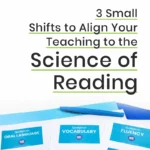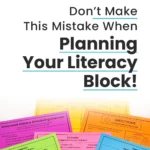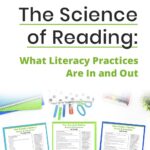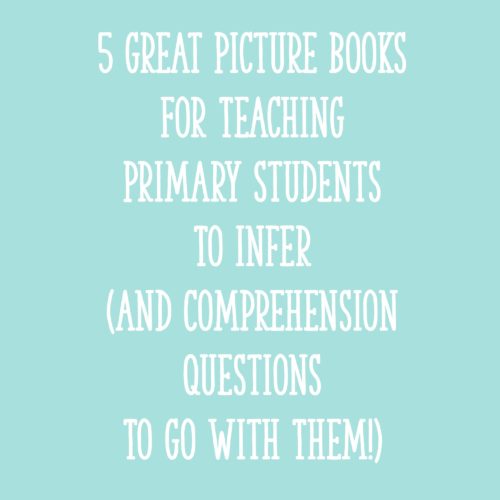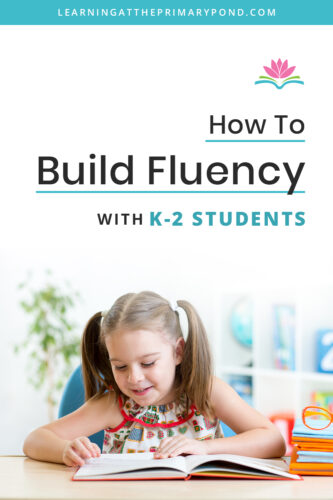I’m sure you’ve been hearing a lot about the Science of Reading – maybe your school is implementing Science of Reading components already or maybe you are being asked to work some elements into your schedule.
Whatever the case may be, it can be difficult to keep it all straight! In education, there are various acronyms and terms being thrown around, and for parents, teachers, and even students, it can sometimes feel overwhelming to keep up with all of them.
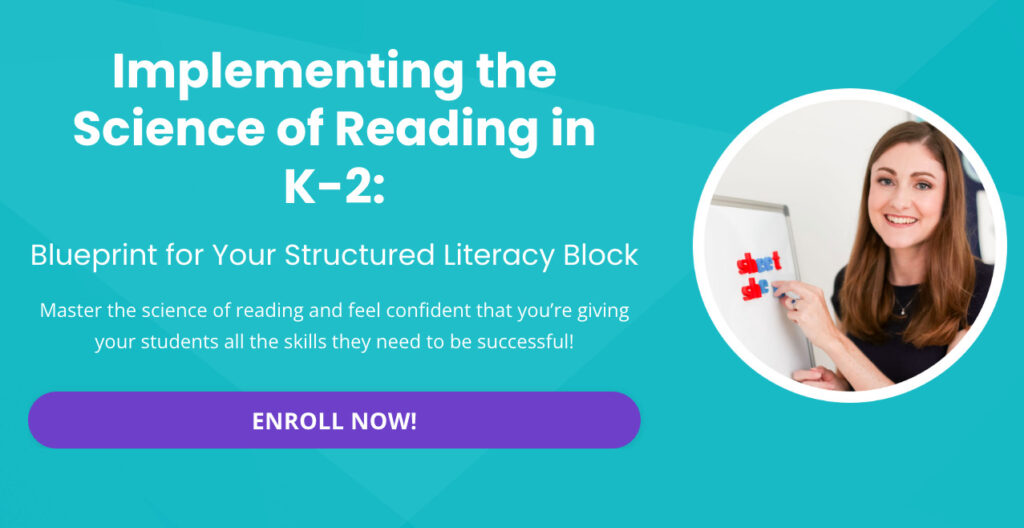
In this blog, I’m going to go through some of the key terms when it comes to the Science of Reading. I also have an entire course on the Science of Reading that will help you feel confident with all these terms and provide you with a blueprint for a schedule so that you can put all the SoR pieces together.
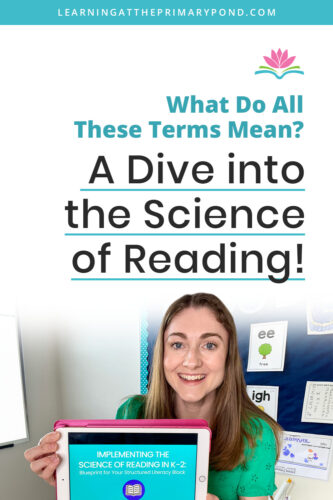
Key Terms
Below you’ll find definitions to some of the important terms when it comes to Science of Reading. This is a great start! However, if you want to learn more about what implementing the Science of Reading actually looks like in a K-2 classroom, my Science of Reading course could be extremely helpful to you!
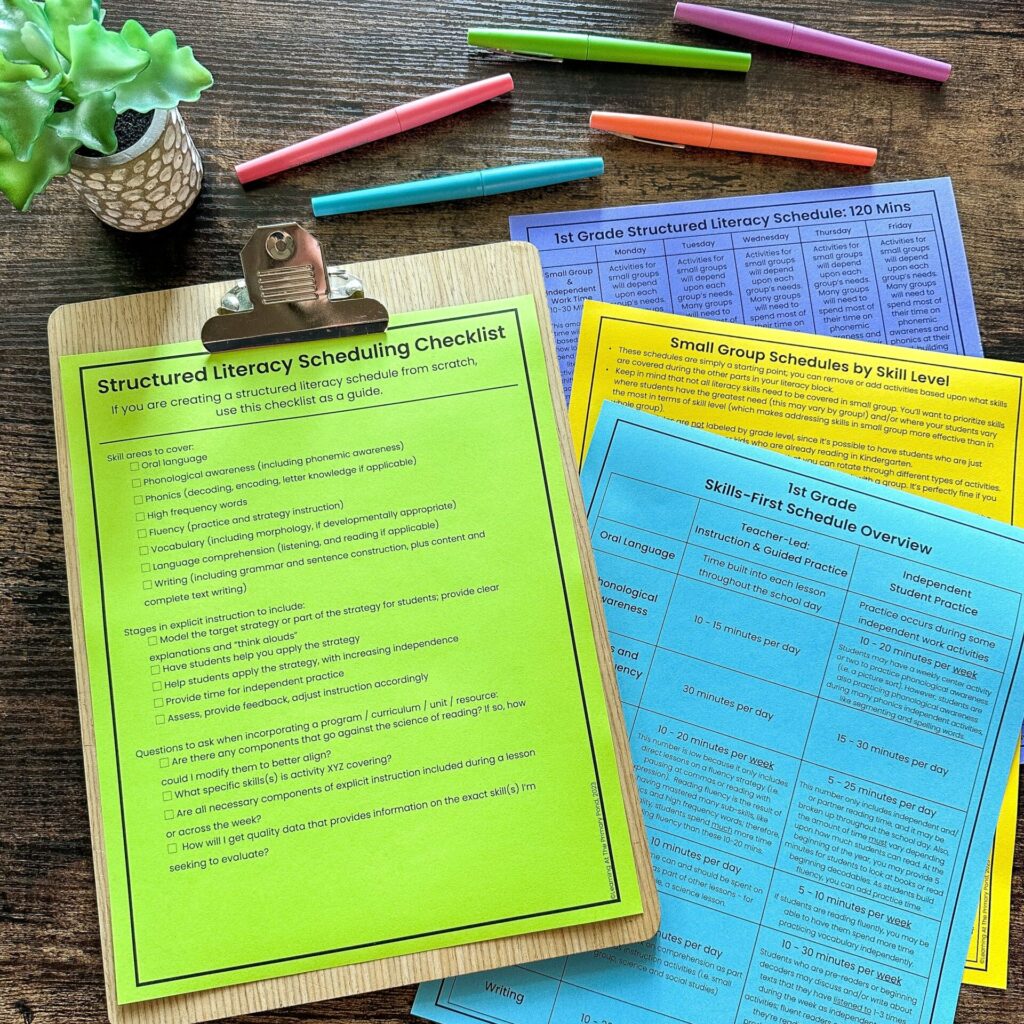
Science of Reading: a large body of research about how reading happens in the brain and how we can most effectively teach reading; sometimes abbreviated SoR
Structured Literacy: an instructional approach that addresses the skills and principles for teaching literacy that have been shown to be effective by the Science of Reading research
Gradual Release Instructional Model: teacher is moving from modeling to guided practice to independent practice when introducing new skills
Explicit Instruction: explaining what you’re doing, modeling as needed; intentionally teaching a specific skill; using the gradual release model; monitoring student progress and providing feedback
Teacher-Led: the teacher is modeling or using guided practice for students to learn a skill
Student-Led: students have an opportunity for independent practice with a given skill
Systematic: following a set sequence of skills (as in a scope and sequence)
Skills-First Method: my approach for planning a structured literacy block by allocating time for skill instruction via the explicit, gradual-release instructional model (rather than organizing your schedule by specific routines or programs)
Phonics: instruction that teaches the relationships between letters and sounds; sometimes informally referred to as word study or word work
Phonological Awareness: ability to identify and work with sounds and sound chunks of spoken language; does not involve letters or words; examples include generating rhyming words, separting words into syllables, and phonemic awareness
Phonemic Awareness: ability to identify and work with individual sounds in spoken language; a type of phonological awareness; examples include naming the initial sound in words, segmenting a word into its sounds
Phoneme: one unit of sound in a syllable or word; for instance, in the word “ship,” there are three phonemes – /sh/ /i/ /p/ – since the “s” and “h” come together to make one phoneme
Grapheme: one or more letters that represent a sound; for example, the letter “b” is a grapheme that represents the sound /b/ in many words, and the letters “ee” form a grapheme that typically represents the long “e” sound /ē/
Decoding: reading words; includes letter/pattern recognition, phoneme/grapheme relationships, fluency, blending; has a reciprocal relationship with encoding
Encoding: spelling/writing; includes handwriting, phoneme/grapheme relationships, irregular spellings; has a reciprocal relationship with decoding
Oral Language: spoken language; the way we communicate through talking; includes 5 components (listed below)
- Phonology: processing speech sounds to understand oral language
- Vocabulary: word knowledge (breadth and depth); phrases included
- Morphology: how word parts like inflectional endings, prefixes, and suffixes are added to root words
- Syntax: grammatical “rules” of language structure; word order
- Pragmatics: practical rules about how language should be used socially (i.e. taking turns)
Fluency: the ability to read accurately, at an appropriate speed, and with proper expression
High-Frequency Words: words that are found often in texts; some are regularly spelled (i.e. in the word “can” each letter makes its expected sound, making it decodable) and some are irregularly spelled (i.e. in the word “have,” the “a_e” doesn’t make its expected long “a” sound)
Vocabulary: knowledge of what words mean and how they are used
Writing: communicating ideas via print; could include handwriting, language/vocabulary, and spelling
Comprehension: a set of complex skills that allow the reader to understand and think deeply about a text
Conclusion
I hope all of these key Science of Reading terms and definitions have been helpful! If you’re interested in learning how to put all of these pieces together and create a schedule for your Kindergarten, first grade, or second grade classroom, I encourage you to check out my Science of Reading course for K-2 teachers!
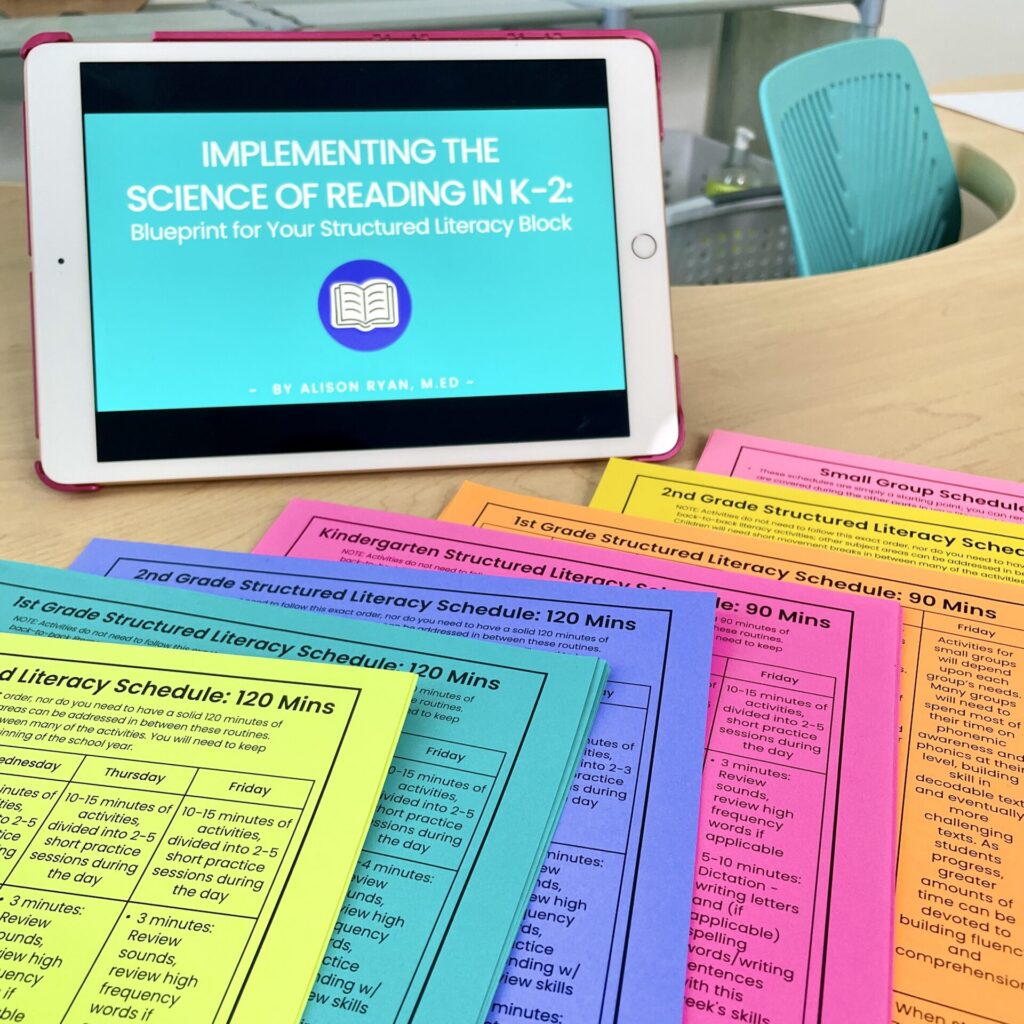
This course will help you:
? Master the Science of Reading as it applies to teaching K-2
? Create daily and weekly schedules that apply the Science of Reading
? Feel confident that you’re giving ALL your students the tools they need to become successful readers and writers!
In this course, I cover the most important principles about the Science of Reading that you need to know – without sending you into information overload!
I also teach you how to translate the Science of Reading into an easy-to-implement daily and weekly schedule.
I show you what to do when you don’t have as much time as you need to teach literacy, and/or when your existing curriculum doesn’t follow the Science of Reading.
AND I give you ready-made, detailed schedules for structured literacy in grades K, 1st, and 2nd that you can download and start using immediately!
This is a self-paced course , which means that you can watch the short videos whenever you have time!
In addition to the videos, you also get downloadable resources, like…
> Detailed daily schedules and small group schedules
> Links to additional free resources to support your Science of Reading instruction
Additionally, at the end of the course, you can choose to take a quick quiz if you want a certificate of completion (with your name on it) to be emailed to you for professional development credits.
When you purchase, you have forever access to the course (no yearly fee or future purchases required).
Read more about the course at this link!
Happy teaching!

